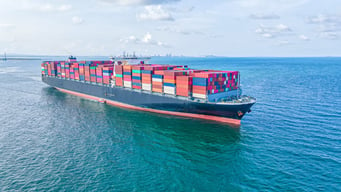
CPT: Carriage Paid To

Home > Freight Glossary >Carriage Paid To

Trending
What Is Carriage Paid To (CPT)?
CPT (Carriage Paid To) is an Incoterm where the seller is responsible for delivering the goods to a carrier or another party nominated by the buyer, with the seller paying the transportation costs up to a specified destination. However, the risk of damage or loss transfers to the buyer as soon as the goods are handed over to the first carrier. Unlike CIP (Carriage and Insurance Paid To), CPT does not require the seller to provide insurance.
CPT Incoterm Responsibilities
In CPT agreements, both the buyer and the seller have specific roles to fulfill during the shipping process. The seller handles the transportation logistics and costs, while the buyer assumes the risk once the goods are handed over to the carrier.
Buyer’s Obligations
- Assume risk as soon as the goods are handed to the first carrier.
- Arrange and pay for insurance if desired, as it’s not provided under CPT.
- Handle import customs clearance, duties, and any additional transportation costs beyond the agreed destination.
Seller’s Obligations
- Arrange and pay for transportation to the agreed destination.
- Provide export documentation and manage customs clearance at the origin.
- Deliver the goods to the first carrier, at which point the risk transfers to the buyer.
CPT Example
A U.S.-based manufacturer agrees to sell construction machinery to a buyer in Germany under CPT terms. The seller arranges and pays for the transportation of the machinery to the Port of Hamburg. Once the machinery is handed over to the first carrier in the U.S., the risk transfers to the buyer, who must handle import customs and arrange further transportation from the Port of Hamburg to their warehouse.
Advantages and Disadvantages of CPT
Advantages:
- The seller has control over the transportation and cost up to the agreed destination.
- Suitable for multiple modes of transport, including road, rail, sea, and air.
- Provides clarity on when the risk transfers from the seller to the buyer.
Disadvantages:
- The buyer bears the risk once the goods are handed over to the first carrier, even though the seller is still covering transportation costs.
- The buyer must arrange for insurance, which can be an added complexity in international trade.
Comparing CPT with Other Incoterms
Difference Between CIF and CPT?
CIF (Cost, Insurance, and Freight) is used exclusively for sea and inland waterway transport, and it requires the seller to provide insurance for the goods up to the destination port. CPT, on the other hand, applies to all modes of transport, and the seller is not responsible for providing insurance. In both cases, the risk transfers to the buyer when the goods are handed over to the first carrier.
Difference Between CPT and CIP?
The primary difference between CPT and CIP is insurance. Under CIP (Carriage and Insurance Paid To), the seller must provide insurance coverage for the goods until they reach the agreed destination, while in CPT, insurance is the buyer’s responsibility.
Difference Between CPT and FCA?
FCA (Free Carrier) differs from CPT in that the seller only pays for transport up to a named place (often a terminal), not the final destination. The buyer assumes costs and risks once the goods are delivered to the carrier at that location. CPT extends the seller’s responsibility for transportation costs beyond the point of loading.
Difference Between CPT and CFR?
CFR (Cost and Freight) is similar to CPT, but it is limited to sea and inland waterway transport. In CFR, the seller pays for transportation to the destination port, but the risk passes to the buyer once the goods are loaded onto the ship. CPT, on the other hand, applies to all transport modes, and the risk transfers when the goods are handed over to the first carrier, regardless of the transport method.
Frequently Asked Questions (FAQs)
How Does CPT Differ from FOB?
In FOB (Free On Board), the seller’s responsibility ends when the goods are loaded onto the vessel, and the buyer assumes all costs and risks from that point onward. CPT, however, requires the seller to pay for transportation costs to a named destination, with the risk transferring to the buyer once the goods are handed to the first carrier, not when loaded onto a vessel.
What Happens if the Goods Are Damaged After the Seller Hands Them to the Carrier?
Once the goods are handed over to the carrier under CPT, the buyer assumes the risk. Therefore, if the goods are damaged during transit after this point, the buyer is responsible for any losses unless they have arranged for insurance to cover the shipment. This makes it crucial for buyers to secure insurance coverage when shipping under CPT terms.
Contact

Ocean Freight

Road Freight








